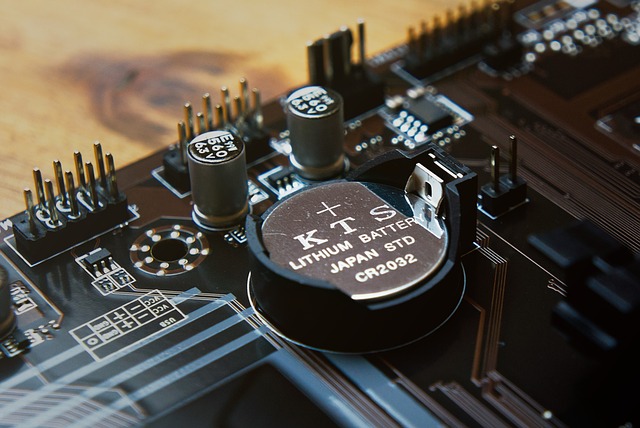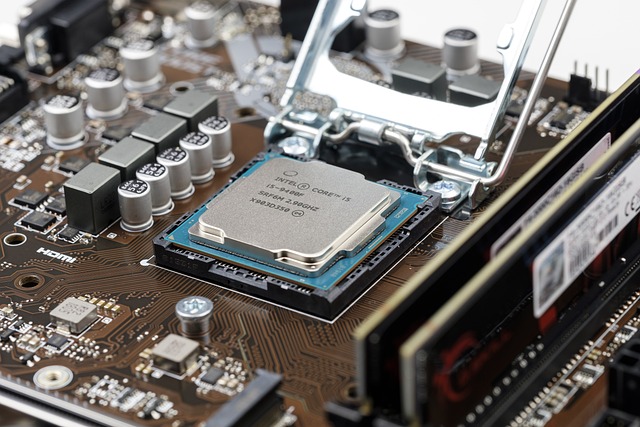Time: 2023-12-20 11:44:47View:
CMOS stands for Complementary Metal-Oxide-Semiconductor. It refers to a type of technology used in electronic devices, particularly in integrated circuits (ICs) and microprocessors. CMOS technology is widely used in various electronic devices, including computers, smartphones, digital cameras, and many other applications.
In computers, CMOS typically refers to the CMOS battery and the CMOS memory. The CMOS battery is a small, coin-shaped battery found on the computer's motherboard. Its primary function is to provide power to a specific chip known as the CMOS memory or CMOS RAM (Random Access Memory). The CMOS battery ensures that critical information, such as system configuration settings and the current date and time, is retained even when the computer is turned off or disconnected from a power source.
The CMOS memory, often referred to as the CMOS RAM, is a small amount of non-volatile memory that stores essential information for the computer's operation. This information includes BIOS (Basic Input/Output System) settings, such as boot device order, hardware parameters, and system clock settings. The CMOS memory is responsible for storing this information because it needs to be retained even when the computer is powered off.
The CMOS memory is read from and written to by the computer's BIOS during the boot process. The BIOS accesses the CMOS memory to retrieve the stored settings and initialize the hardware components accordingly. Users can also access and modify the CMOS settings through the BIOS setup utility, allowing customization of various system parameters.
The CMOS battery plays a crucial role in maintaining the integrity of the CMOS memory. If the CMOS battery loses its charge or is removed, the CMOS memory may lose its stored information, resulting in the computer reverting to default settings. This can lead to issues such as incorrect system time, boot device errors, or configuration inconsistencies.
In summary, CMOS refers to both the CMOS battery and the CMOS memory found in computers. The CMOS battery provides power to the CMOS memory, which stores critical system configuration information. This information is utilized by the computer's BIOS during startup and can be customized by users. The CMOS battery ensures that the CMOS memory retains its data even when the computer is powered off, maintaining the integrity of the system settings.

The chip has a built-in clock and a memory called RAM with 128 storage units. Even when the device is turned off, the clock continues working, and the information stored in the RAM remains intact.
This chip is responsible for storing important startup information, such as the date, time, and settings of a computer. It is a type of memory on the motherboard called CMOS, which can be both read from and written to. It stores the hardware configuration of the BIOS and user-defined parameters.
Also known as BIOS memory, this type of memory is found on the computer's motherboard. It stores essential information used during the boot process to initialize basic devices. The motherboard's BIOS accesses this stored information and then hands over control to the operating system.
The motherboard battery is used to maintain the system's clock accuracy and preserve important BIOS information stored in the CMOS. If the battery is low, the system time may revert to the manufacturing date. The battery can be recharged when not in use. If the battery is depleted and the computer remains inactive for two days, upon starting the system, the time will not be accurate and will reset to the manufacturing time.
Within the 128-byte RAM, a portion is dedicated to the internal real-time clock for saving time information. The remaining storage units are primarily used to store system configuration information that the BIOS program reads during startup. This allows customization of the system's settings.
The chip has two ports, namely port 70h and port 71h. The CPU uses these ports to read from and write to the CMOS RAM.
Port 70h is the address port, used to specify the memory unit in the CMOS RAM to be accessed. Port 71h is the data port, which stores the data read from or to be written into the selected CMOS RAM unit. CPU operations involving the CMOS RAM are divided into two steps, such as reading the data from the 2nd unit of the CMOS RAM.

CMOS technology is based on semiconductor principles and is used to store and process digital information. It employs complementary pairs of transistors, including metal-oxide-semiconductor field-effect transistors (MOSFETs), which are fundamental components of electronic circuits.
At the core of CMOS technology are MOSFETs, which have three terminals: the gate, the source, and the drain. The gate terminal regulates the current flow between the source and the drain. CMOS technology takes advantage of the two modes in which MOSFETs can operate: enhancement mode and depletion mode.
In CMOS circuits, complementary pairs of MOSFETs are utilized, consisting of an n-type MOSFET (NMOS) and a p-type MOSFET (PMOS). The NMOS transistor operates in enhancement mode, conducting current when a voltage is applied to its gate terminal, while the PMOS transistor operates in depletion mode, conducting current when no voltage is applied to its gate terminal.
The complementary nature of NMOS and PMOS transistors enables CMOS technology to achieve low power consumption. When one transistor is off, the other is on, minimizing power dissipation in the circuit. CMOS circuits consume power only during the brief transition between logic states, where both transistors are momentarily conducting.
CMOS circuits are widely used in digital logic circuits, such as microprocessors, memory chips, and other integrated circuits, which utilize the binary system to represent information using combinations of 0s and 1s. CMOS transistors are used to create logic gates, such as AND, OR, and NOT gates, which are essential components of digital circuits.
The operation of CMOS circuits involves manipulating voltages and currents to represent and process digital information. By controlling the voltage levels applied to the gate terminals of the MOSFETs, CMOS circuits can regulate current flow and determine the output based on the input signals.
In summary, CMOS technology utilizes complementary pairs of MOSFETs to store and process digital information. Its low power consumption, high noise immunity, and scalability have made it the preferred technology for a wide range of electronic devices, enabling the development of powerful and energy-efficient computing systems.
CCD (Charge-Coupled Device) and CMOS (Complementary Metal-Oxide-Semiconductor) are two distinct technologies used in image sensors. Both CCD and CMOS have their own strengths and weaknesses, and they are commonly found in digital cameras, smartphones, and other imaging devices. Here's a detailed comparison between CCD and CMOS:
Feature | CCD | CMOS |
Power Consumption | Higher power consumption | Lower power consumption |
Readout Speed | Slower readout speed | Faster readout speed |
Image Quality | Excellent color accuracy and dynamic range | Comparable image quality to CCD |
Low-Light Performance | Good low-light performance | Improved low-light performance, but may still lag behind CCD |
On-Chip Functionality | Limited on-chip functionality | Ability to integrate additional functionality on the same chip |
Production Cost | Specialized fabrication processes, higher cost | Standard CMOS fabrication processes, lower cost |
Application | Professional photography, scientific applications | Consumer electronics, general-purpose imaging |
Market Presence | Historically dominant, declining | Increasingly prevalent in consumer electronics |
CMOS technology, at its core, relies on the principles of semiconductor technology to store and process digital information. It is a fundamental building block of modern electronic devices, enabling the creation of powerful and energy-efficient computing systems. The key to CMOS technology lies in its utilization of complementary pairs of transistors, particularly metal-oxide-semiconductor field-effect transistors (MOSFETs), which are essential components of electronic circuits.
MOSFETs are the heart of CMOS technology. These transistors have three terminals: the gate, the source, and the drain. The gate terminal plays a crucial role in controlling the flow of current between the source and the drain. CMOS technology takes advantage of the fact that MOSFETs can operate in two modes: the enhancement mode and the depletion mode. This flexibility in operation is a key factor in the effectiveness of CMOS technology.
In CMOS circuits, pairs of complementary MOSFETs are employed, consisting of an n-type MOSFET (NMOS) and a p-type MOSFET (PMOS). The NMOS transistor operates in enhancement mode, conducting current when a voltage is applied to its gate terminal. On the other hand, the PMOS transistor operates in depletion mode, conducting current when no voltage is applied to its gate terminal. This complementary nature of NMOS and PMOS transistors is crucial in achieving low power consumption, a defining feature of CMOS technology.
The low power consumption of CMOS technology is made possible by the fact that when one of the transistors is off (non-conducting), the other transistor is on (conducting), ensuring minimal power dissipation in the circuit. This unique characteristic allows CMOS circuits to consume power only during the brief transition between logic states, where both transistors are momentarily conducting. This efficiency in power usage has made CMOS technology the preferred choice for a wide range of electronic devices.
CMOS technology has found extensive applications across a wide array of electronic devices, playing a pivotal role in shaping the modern digital landscape. Its versatility, low power consumption, high noise immunity, and scalability have made it the preferred technology for a diverse range of applications, from microprocessors to memory chips and beyond.
One of the most prominent applications of CMOS technology is in microprocessors, where it serves as the backbone of computing devices, ranging from personal computers to smartphones and embedded systems. The low power consumption of CMOS circuits is particularly advantageous in this context, as it allows for the development of energy-efficient processors that can deliver high performance without excessive power usage. This has been instrumental in the evolution of mobile computing, enabling the development of powerful yet battery-friendly devices.
Memory chips also heavily rely on CMOS technology for their operation. From volatile RAM (Random Access Memory) to non-volatile ROM (Read-Only Memory) and flash memory, CMOS-based circuits are integral to the storage and retrieval of digital information in electronic devices. The ability of CMOS technology to efficiently represent and process digital information has been crucial in the advancement of memory storage capabilities, contributing to the ever-increasing storage capacities of modern devices.
Moreover, CMOS technology is widely utilized in the creation of integrated circuits for various applications, including communication devices, consumer electronics, automotive systems, and industrial automation. Its ability to create logic gates, such as AND, OR, and NOT gates, forms the foundation for the design of complex digital systems, enabling the development of sophisticated electronic devices with diverse functionalities.
In the realm of sensor technology, CMOS-based image sensors have become ubiquitous in digital cameras, smartphones, and other imaging devices. The low power consumption and high integration capabilities of CMOS technology have driven the development of high-resolution image sensors with advanced features, contributing to the proliferation of digital imaging technologies in both consumer and professional domains.
Furthermore, the scalability of CMOS technology has facilitated its integration into emerging fields such as Internet of Things (IoT) devices, wearable technology, and biomedical devices. Its ability to efficiently process and transmit digital information in a compact and energy-efficient manner has been instrumental in the development of interconnected smart devices that form the fabric of the modern digital ecosystem.
In summary, the applications of CMOS technology span a broad spectrum of electronic devices, underpinning the functionality and performance of modern computing, communication, imaging, and sensing systems. Its impact on diverse industries and its role in driving technological innovation make CMOS a cornerstone of the digital revolution.